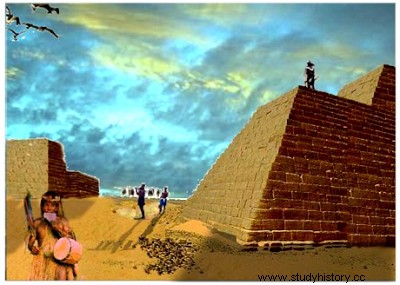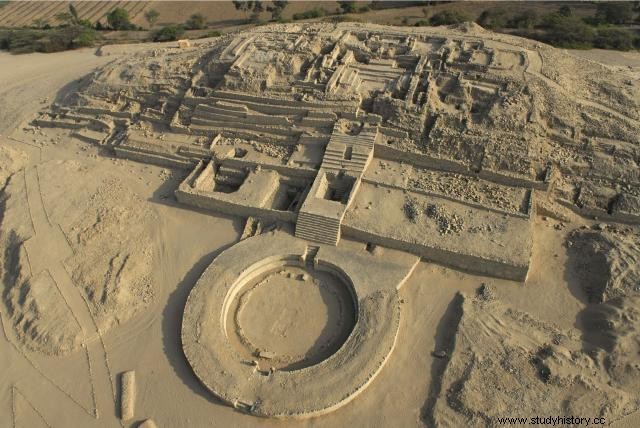
It should be mentioned that the decision of the World Heritage Committee, composed by representatives of 21 countries, was based on the technical report of the International Council on Monuments and Sites (ICOMOS). The PEACS initiated the steps for the candidacy in 2004, which was supported by the National Institute of Culture (INC) and the Ministry of Foreign Affairs.
LOCATION, EXTENSION AND AGE
The City of Fire or the Sacred City of Caral, the center of the oldest civilization in the Andean world, is located on the banks of the Supe River, province of Huaura, department of Lima, at an altitude of 350 meters above sea level . The architectural remains of the Sacred City of Caral cover an area of 50 hectares and date back to 3000 years before Christ and belong to the late archaic period.

EN CARAL IT ORIGINATED THE ANCIENT ANDEAN STATE
VALUOUS ARCHAEOLOGICAL REMAINS
YOUR MOST IMPORTANT ACTIVITIES Archaeologist Ruth Shady maintains that "agriculture was one of the most important economic activities of that population, which was also dedicated to fishing." They were also engaged in trade, which is demonstrated by the discovery of some huayruros in the Sacred City of Caral, which undoubtedly come from the jungle, and hardwood that grows only in the mountains.

THEOCRACY, GODS AND RITUALS The civilization of Caral would have been directed by a theocratic State, ruled by priest-kings, as it happened with all the civilizations of the ancient world. The main ritual activities would have been carried out at the altar of eternal fire, which is a closed area with a hearth that has a ventilation duct, where offerings to the gods of Caral were cremated. But, in other places of the sanctuary there are also stoves, which shows that the monumental building was dedicated to the celebration of religious rituals. The walls were plastered and painted, so the monument in its time would have been majestic and imposing, admired by all the inhabitants of the Supe Valley.
Lima, June 29, 2009
 PANORAMIC VIEW OF THE AMPHITHEATER - CIRCULAR PLAZA
PANORAMIC VIEW OF THE AMPHITHEATER - CIRCULAR PLAZA 